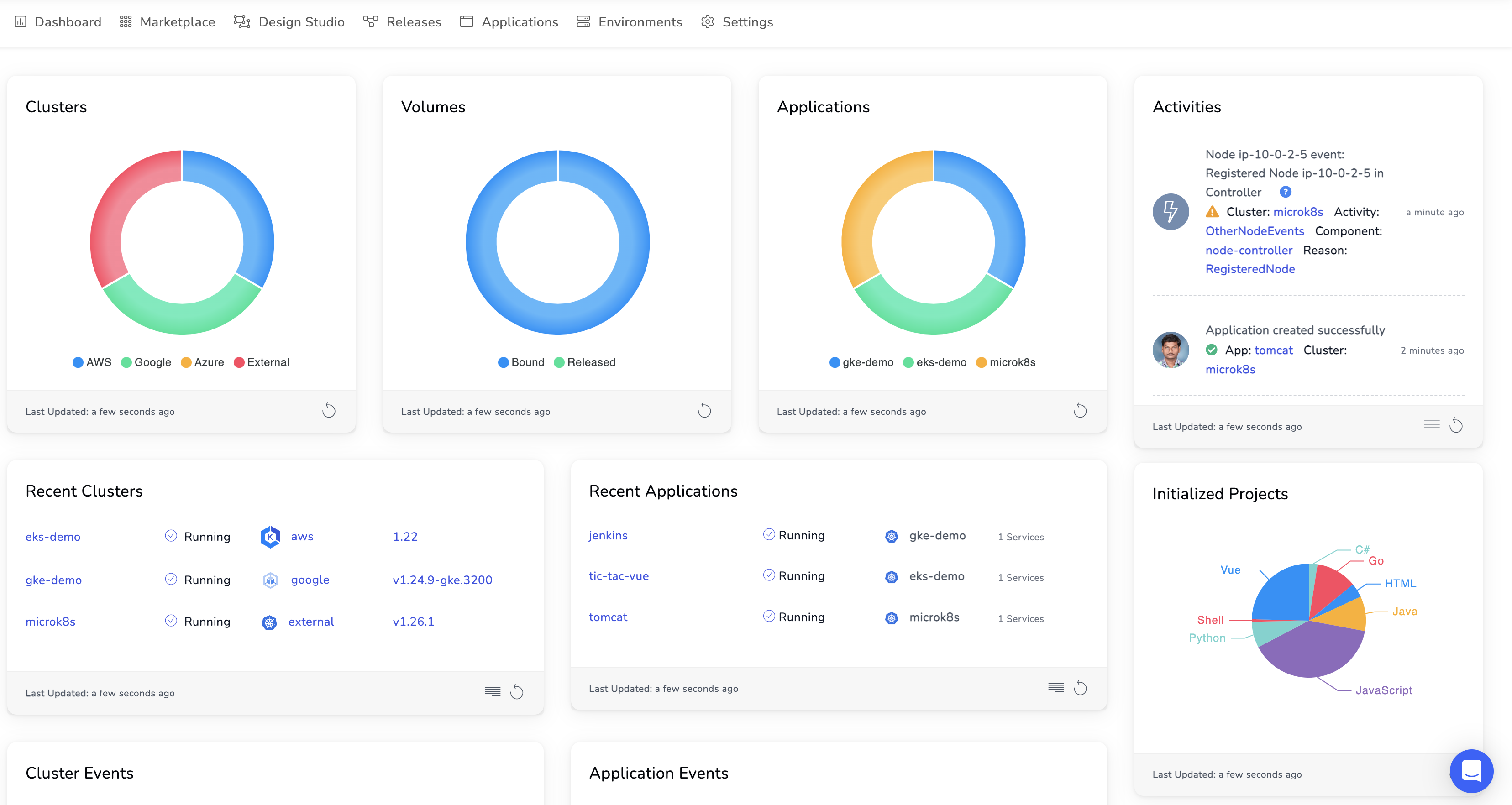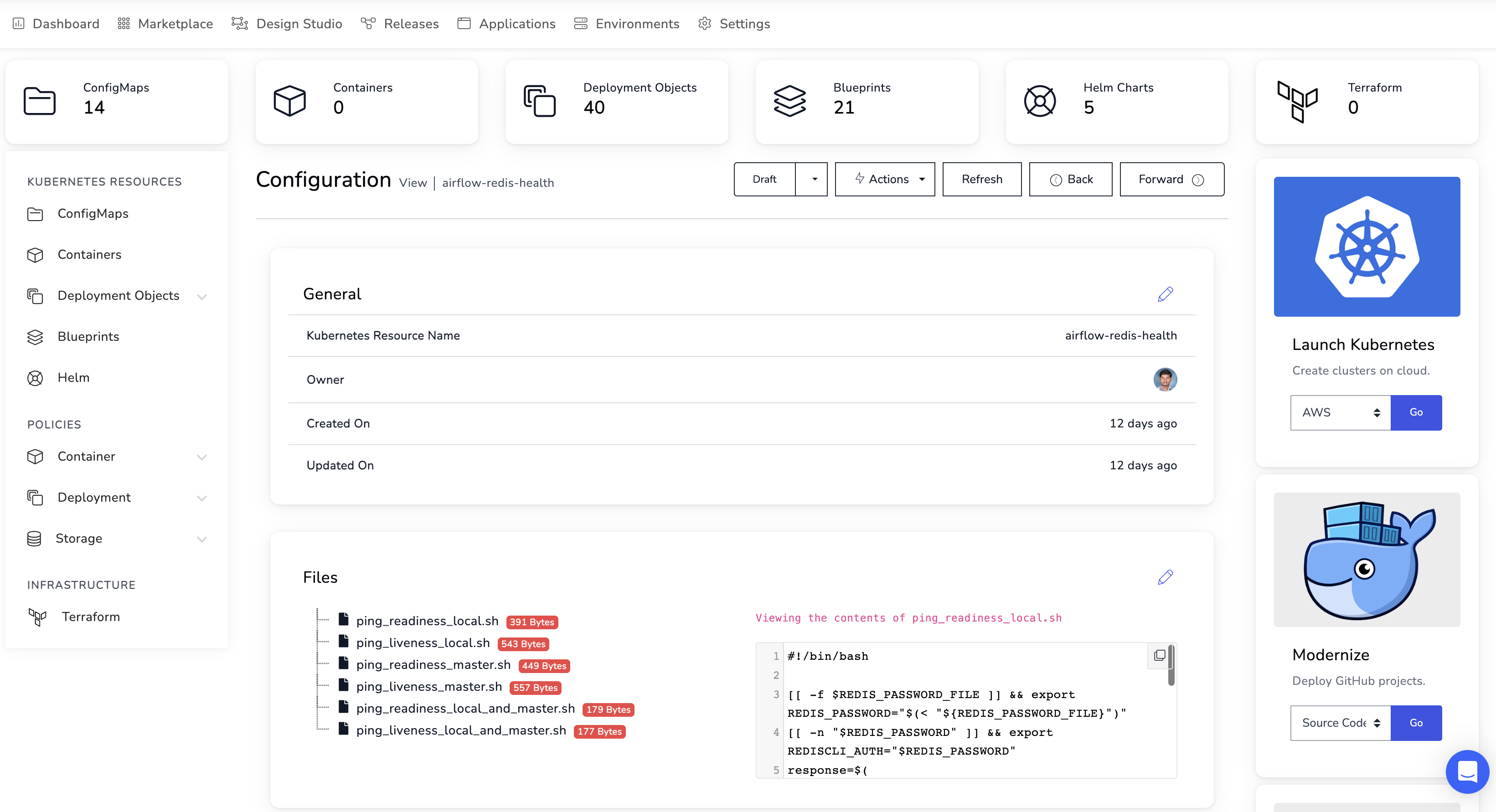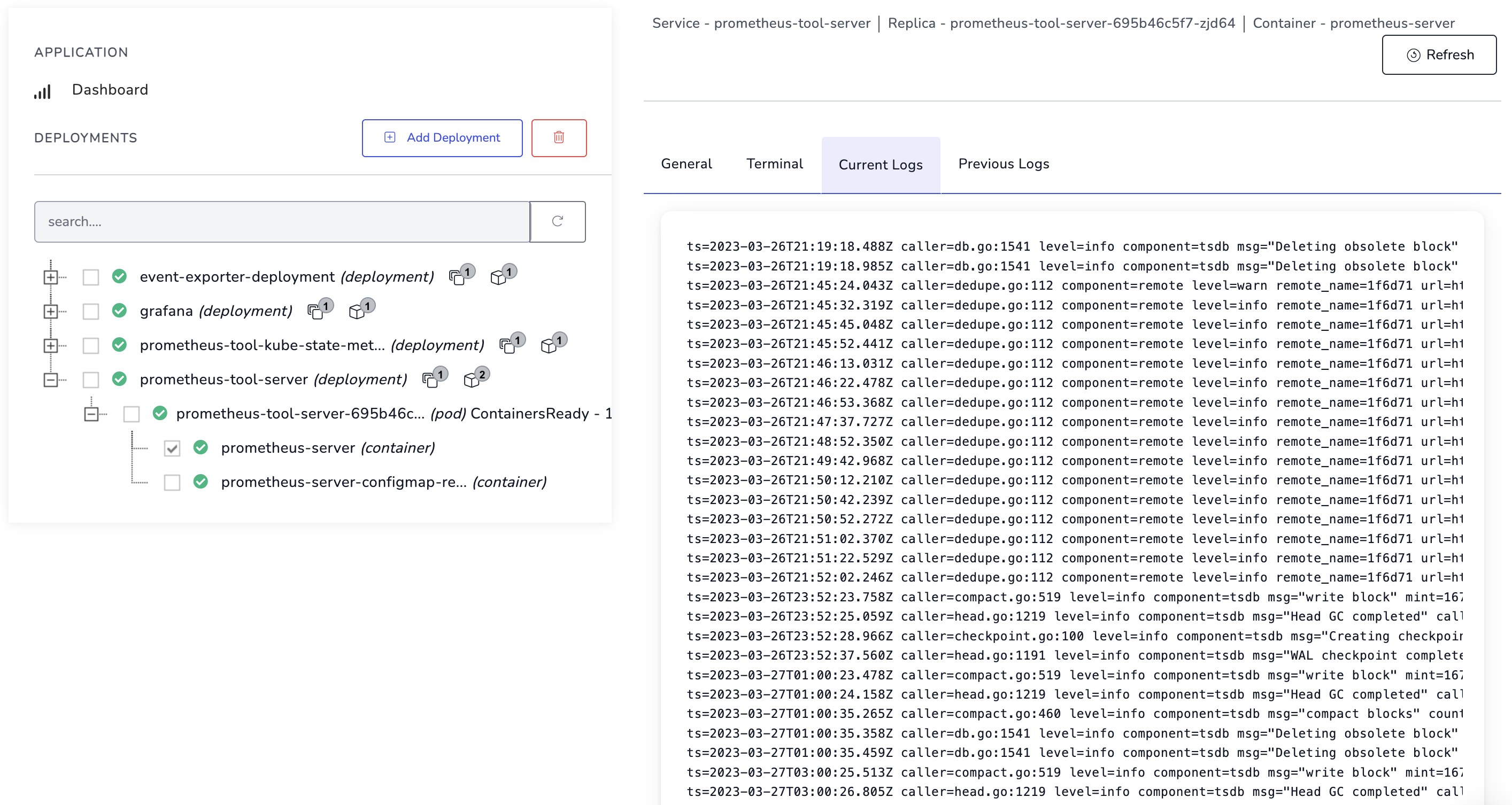gopaddle
Using gopaddle, developers can generate everything they need to set up Kubernetes infrastructure and deployments. From Dockerfiles to Kubernetes YAML files, Helm Charts, and pipeline code, gopaddle will help you containerize and get the applications running in minutes. Developers can also efficiently manage existing applications on the Kubernetes cluster by monitoring application performance and managing alerts and notifications.
gopaddle Lite
gopaddle Lite is a life-time free community edition of gopaddle that can be installed in a single node/single user mode on a Kubernetes cluster. gopaddle lite comes with many capabilities that helps developers to built a self-service portal for a small scale Kubernetes deployment at zero cost.
1. DevOps Dashboard
The main dashboard gives a bird’s eye view of the clusters, volumes, applications, events and projects imported and managed by gopaddle.

2. Builds & Vulnerabilities
The builds and vulnerabilities dashboard captures the status of the Docker builds and the severity of the vulnerabilities identified in the builds.

3. Quick start wizards
gopaddle offers 3 type of quick start wizards -
1. Provision Clusters - Onboard GKE or AWS cloud accounts with fine grained access controls and provision multi-cloud Kubernetes cluster. Available only in SaaS & Enterprise Editions.
2. Dockerize & Deploy - Automatically generate Dockerfiles and Kubernetes YAML files by analyzing the source code in GitHub or GitLab accounts and deploy them on to Kubernetes clusters.
3.Generate Pipeline code - Generate Jenkins or GitHub Actions or Azure DevOps pipeline Code for an application deployed through gopaddle.

4. Marketplace
Subscribe to a gopaddle marketplace application, and visualize the helm chart in the design studio. These templates can be launched on a Kubernetes cluster using simple UI based wizards.

5. Cluster Management
Clusters can be centrally managed. gopaddle automatically installs a few addons on these clusters - like Prometheus and Grafana for an out-of-the-box monitoring and alerting capabilties.

6. Designer Studio
Design Studio provides a visual representation of the Kubernetes resources and helps to quickly design and compose Kubernetes resources without having to learn YAML.

7. Application Management
Centrally monitor the existing Kubernetes deployments.

8. Alerts & Notifications
Set alerts and notifications for the applications and clusters managed by gopaddle. gopaddle supports any type of incoming webhooks, slack, AWS SNS, Jenkins Jobs and PagerDuty as notification channel.

9. Developer Tools - Container Terminal
Easily troubleshoot issues in deployments using inbuilt developer tools like Container terminal without having to use Kubectl commands.

10. Developer Tools - Container Logs
Easily troubleshoot issues in deployments using inbuilt developer tools like Container logs without having to use Kubectl commands.

Creating an App using the Control Panel
Click the Deploy to DigitalOcean button to install a Kubernetes 1-Click Application. If you aren’t logged in, this link will prompt you to log in with your DigitalOcean account.
Creating an App using the API
In addition to creating gopaddle using the control panel, you can also use the DigitalOcean API. As an example, to create a 3 node DigitalOcean Kubernetes cluster made up of Basic Droplets in the SFO2 region, you can use the following doctl command. You need to authenticate with doctl with your API access token) and replace the $CLUSTER_NAME variable with the chosen name for your cluster in the command below.
doctl kubernetes clusters create --size s-4vcpu-8gb $CLUSTER_NAME --1-clicks gopaddle-lite
Getting Started After Deploying gopaddle
One the installation is complete, gopaddle dashboard can be accessed at http://NodeIP:30003/
NodeIP can be obtained by executing the command below:
root@localhost:~# kubectl get nodes -o wide
Getting started with gopaddle
Once the gopaddle lite dashboard is available, developers can open the gopaddle dashboard in the browser, review the evaluation agreement and subscribe to the lite edition.
Containerize and Deploy
Once the subscription is complete, developers can login to the gopaddle UI, using their email ID and the initial password.
In the Design Studio, the Containerize and Deploy Quickstart wizard helps to onboard a Source Code project from GitHub using the GitHub personal access token, build and push the generated container image to the Docker Registry. Once the build completes, gopaddle generates the necessary YAML files and deploys the docker image to the local microk8s cluster.

Pre-requisites
Docker Access Token with Read & Write Permissions
GitHub Person Access Token for containerizing Private Repositories
In the final step of the Containerize and Deploy Quickstart wizard, enable the option to Disable TLS verification.
All the artificats generated during the process can be edited and re-deployed at a later stage.
Application Templates - Marketplace
The gopaddle Marketplace Applications hosts a variety of pre-built Kubernetes templates. Developers can subscribe to these templates and deploy them on the local cluster.
Help
For help related to gopaddle community (lite) edition, visit the gopaddle Help Center at: https://help.gopaddle.io